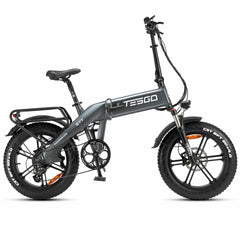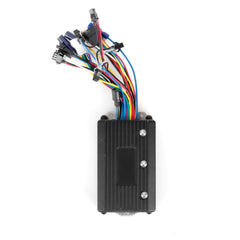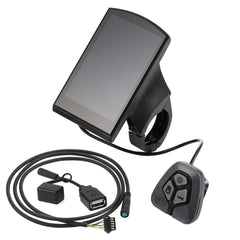
The Evolution of Electric Bikes: A Brief History
Electric bikes, also known as e-bikes, have gained significant popularity in recent years as a convenient and eco-friendly mode of transportation. However, the concept of electric-assisted bicycles dates back much further than you might think. In this blog, we'll take a journey through the fascinating history of electric bikes and see how they have evolved over time.
Early Experiments (19th Century):
The idea of electric bicycles can be traced back to the early 19th century when inventors began experimenting with electric propulsion. In 1867, a patent was filed by Ogden Bolton Jr. for an early electric bicycle powered by non-rechargeable batteries. This marked one of the earliest recorded attempts at creating an electric bike.
The Development of Batteries (Late 19th Century):
One of the main challenges in the early days of electric bicycles was the limited capacity of batteries. It wasn't until the late 19th century that advancements in battery technology, such as the lead-acid battery, made it possible to store more energy and extend the range of electric vehicles, including electric bicycles.
Modern Electric Bicycles (20th Century):
Electric bikes as we know them today began to take shape in the mid-20th century. In the 1950s and 1960s, companies like Phillips and Piaggio started producing electric mopeds and bicycles. These early electric bikes were mainly used for utility purposes, such as postal delivery.
The Rise of Pedal-Assist (1990s):
The 1990s saw a significant development in electric bikes with the introduction of pedal-assist technology. Instead of relying solely on a throttle, these e-bikes provided electric assistance when the rider pedaled. This innovation made electric bikes more user-friendly and efficient, paving the way for their widespread adoption.
Advancements in Battery Technology (2000s):
The 21st century brought further advancements in battery technology, particularly the development of lithium-ion batteries. These batteries were lighter, more energy-dense, and longer-lasting than previous battery types. As a result, e-bikes became more practical and appealing to a broader range of riders.
Integration of Electric Components (2010s):
In the 2010s, electric bike designs underwent a significant transformation. Electric components, including motors and batteries, became more integrated into the frame, giving e-bikes a sleeker and more natural appearance. This integration also improved the balance and handling of electric bikes.
Diversity in E-Bike Types (Present Day):
Today, the electric bike market offers a wide variety of e-bike types to cater to different riders' needs. There are electric mountain bikes, commuter e-bikes, cargo e-bikes, and even electric folding bikes. The availability of diverse e-bike options has made them a popular choice for commuting, leisure, and fitness.
The Future of Electric Bikes:
The future of electric bikes looks promising. As battery technology continues to improve, e-bikes will likely become more energy-efficient and offer even longer ranges. Additionally, ongoing advancements in motor technology will result in quieter and more powerful electric bike motors. These developments will further solidify electric bikes as a sustainable and convenient mode of transportation.
In conclusion, the history of electric bikes is a testament to human innovation and the desire for more efficient and eco-friendly transportation options. From early experiments with rudimentary electric propulsion to the sleek and versatile e-bikes of today, the evolution of electric bicycles continues to shape the way we travel and explore our world. As technology continues to advance, the future of electric bikes holds exciting possibilities for riders of all kinds.
Newletter
Promotions, new products and sales. Directly to your inbox.
Lastest Blog Post






























 US
US
 Canada
Canada




